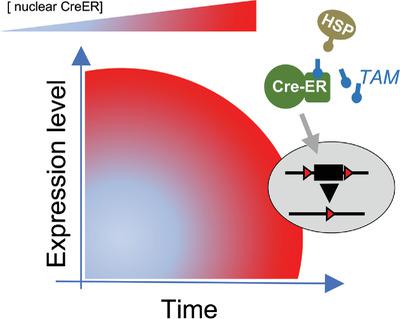当前位置:
X-MOL 学术
›
Eur. J. Immunol.
›
论文详情
Our official English website, www.x-mol.net, welcomes your
feedback! (Note: you will need to create a separate account there.)
Comparative analysis of CreER transgenic mice for the study of brain macrophages: A case study.
European Journal of Immunology ( IF 4.5 ) Pub Date : 2019-12-11 , DOI: 10.1002/eji.201948342 Louise Chappell-Maor 1 , Masha Kolesnikov 1 , Jung-Seok Kim 1 , Anat Shemer 1 , Zhana Haimon 1 , Jonathan Grozovski 1 , Sigalit Boura-Halfon 1 , Takahiro Masuda 2 , Marco Prinz 2, 3, 4 , Steffen Jung 1
European Journal of Immunology ( IF 4.5 ) Pub Date : 2019-12-11 , DOI: 10.1002/eji.201948342 Louise Chappell-Maor 1 , Masha Kolesnikov 1 , Jung-Seok Kim 1 , Anat Shemer 1 , Zhana Haimon 1 , Jonathan Grozovski 1 , Sigalit Boura-Halfon 1 , Takahiro Masuda 2 , Marco Prinz 2, 3, 4 , Steffen Jung 1
Affiliation

|
Conditional mutagenesis and fate mapping have contributed considerably to our understanding of physiology and pathology. Specifically, Cre recombinase-based approaches allow the definition of cell type-specific contributions to disease development and of inter-cellular communication circuits in respective animal models. Here we compared Cx3 cr1CreER and Sall1CreER transgenic mice and their use to decipher the brain macrophage compartment as a showcase to discuss recent technological advances. Specifically, we highlight the need to define the accuracy of Cre recombinase expression, as well as strengths and pitfalls of these particular systems that should be taken into consideration when applying these models.
中文翻译:

用于大脑巨噬细胞研究的CreER转基因小鼠的比较分析:一个案例研究。
有条件的诱变和命运定位为我们对生理学和病理学的理解做出了巨大贡献。具体而言,基于Cre重组酶的方法可定义细胞类型对疾病发展的贡献以及相应动物模型中的细胞间通讯回路。在这里,我们比较了Cx3 cr1CreER和Sall1CreER转基因小鼠及其用于破译大脑巨噬细胞区室的用途,以作为讨论最近技术进步的展示。具体来说,我们强调需要定义Cre重组酶表达的准确性,以及在应用这些模型时应考虑的这些特定系统的优势和缺陷。
更新日期:2019-12-11
中文翻译:

用于大脑巨噬细胞研究的CreER转基因小鼠的比较分析:一个案例研究。
有条件的诱变和命运定位为我们对生理学和病理学的理解做出了巨大贡献。具体而言,基于Cre重组酶的方法可定义细胞类型对疾病发展的贡献以及相应动物模型中的细胞间通讯回路。在这里,我们比较了Cx3 cr1CreER和Sall1CreER转基因小鼠及其用于破译大脑巨噬细胞区室的用途,以作为讨论最近技术进步的展示。具体来说,我们强调需要定义Cre重组酶表达的准确性,以及在应用这些模型时应考虑的这些特定系统的优势和缺陷。











































 京公网安备 11010802027423号
京公网安备 11010802027423号